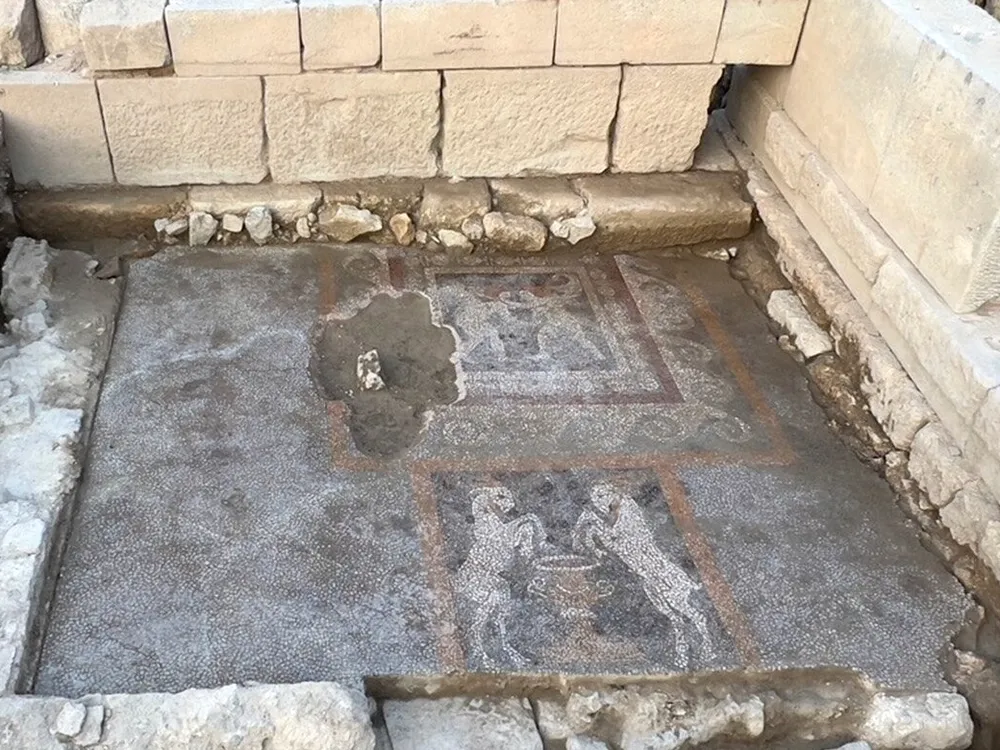New archaeological discoveries are shedding light on the bouleuterion, or city council hall, of Teos—an ancient Greek city located in modern-day Turkey.
A Glimpse into Teos: The City of Art
Situated along Turkey’s western coast, Teos was a thriving cultural and political hub over 2,000 years ago. Founded around the 10th century BCE, it grew into a renowned center of philosophy and the arts, drawing intellectuals and creatives from across the ancient world. Greek historian Herodotus once described Teos as “the center of Ionia,” referring to the Greek settlements in present-day Turkey.
Today, remnants of Teos’ grandeur remain, including ruins of temples, roads, a harbor, and a sophisticated rainwater cistern. Now, researchers from the University of Pennsylvania, in collaboration with Ankara University’s Teos Archaeological Project, have uncovered new details about one of its most important structures—the bouleuterion.
A Well-Preserved City Council Hall with Layers of History
The bouleuterion of Teos, resembling a small Greek theater, was a gathering place for civic meetings and public ceremonies. Rows of stone benches slope down toward a central platform, where important decisions were once debated.
“This is the best-preserved building in Teos,” says Mantha Zarmakoupi, a classical archaeologist from the University of Pennsylvania, who has been studying the site for four years. “It also holds clues to the city’s early history beneath it.”
Initial findings indicate that the structure was built in the late 3rd century BCE during the Hellenistic period. Later, during Roman rule, it was expanded with a portico and a stage, allowing it to host theatrical performances as well.
Fascinating Discoveries: Mosaics and a Vanishing Inscription
During excavations, archaeologists unearthed two remarkable Greek mosaics dating back to the 3rd century BCE. One features a pair of winged cupids—symbolic figures associated with Eros, the god of love. In Greek mythology, Eros is often linked to Dionysus, the deity of wine and festivity, who was the patron god of Teos. The city was even home to a grand temple dedicated to Dionysus, designed by the Hellenistic architect Hermogenes.
Another intriguing find was a series of architrave blocks—stone pieces that once sat atop the building’s columns. These blocks bore an inscription in letters nearly a foot tall, but at some point in history, someone attempted to erase them. Using 3D modeling and masonry markings, researchers reconstructed the fragmented text.
The inscription appears to acknowledge those who financed the bouleuterion’s construction. “It gives us valuable insight into how the building was funded and who was involved,” explains historian Peter Satterthwaite. However, the deliberate removal of the text hints at a later historical event—perhaps a shift in power or an effort to erase a controversial figure’s legacy.
With part of the inscription still missing, researchers hope further excavations will reveal the complete message.
Unraveling the Past, One Layer at a Time
Zarmakoupi likens the excavation process to peeling an onion. “Each discovery leads to another,” she says. “One layer is removed, and a new mystery emerges.”
The project, funded by the Gerda Henkel Foundation, continues to piece together Teos’ history, offering a deeper understanding of its political, artistic, and social legacy. With each new find, archaeologists come closer to reconstructing the life and culture of this once-flourishing city.











